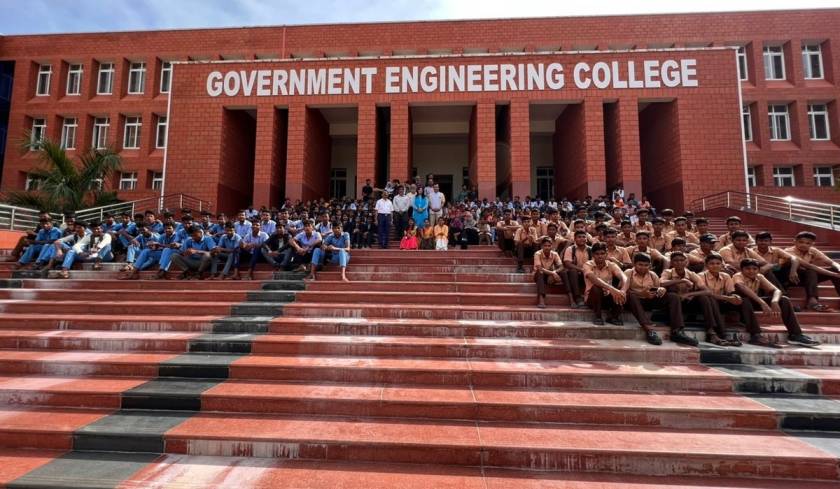I remember taking my first computer-based test back in 2018. My hands were shaking as I clicked through questions on the screen. Fast forward to today, and I've watched digital exams transform from scary new technology to something students handle with ease.
The world of testing is changing fast. Digital examination platforms are replacing old paper tests everywhere. As someone who's worked in education technology for over eight years, I've seen this change happen right before my eyes.
What Are Digital Examination Systems?
Digital examination systems are computer-based testing platforms that let students take tests on computers, tablets, or phones instead of paper. These electronic assessment tools make testing faster, easier, and more accurate.
Think of it like this: instead of filling in bubbles with a pencil, students now click answers on a screen. The computer grades most questions right away. Pretty cool, right?
Key Features of Modern Digital Testing
- Instant grading for multiple choice questions
- Secure testing environments that prevent cheating
- Adaptive questioning that adjusts difficulty based on answers
- Multi-media questions with videos, audio, and images
- Real-time monitoring of student progress
The Future of Digital Examination Systems in Education
The future of digital examination systems in education looks incredibly bright. I've been tracking these trends for years, and here's what's coming:
Online Proctoring Solutions Are Getting Smarter
Remote proctoring technology now uses artificial intelligence to watch students during tests. These systems can detect suspicious behavior and alert teachers immediately.
When COVID-19 hit, I helped schools set up these systems overnight. The technology that seemed impossible just five years ago is now standard in many classrooms.
Adaptive Testing Algorithms Personalize Every Exam
Personalized assessment platforms are revolutionizing how we test students. These smart systems change questions based on how well students are doing.
If you're doing great, you get harder questions. Struggling? The test gives you easier ones. This helps teachers understand exactly what each student knows.
Benefits of Digital Assessment Technology
Faster Results and Better Feedback
I've seen teachers wait weeks for paper test results. With automated grading systems, results come back in minutes or hours, not days.
Students get detailed feedback right away. They can see which topics they need to work on before moving to the next lesson.
Cost Savings for Schools
Digital testing solutions save schools thousands of dollars every year. No more printing costs, shipping fees, or storage problems. I helped one school district save over $50,000 in their first year of digital testing.
Environmental Benefits
Every digital test means fewer trees cut down for paper. One large school I worked with eliminated over 100,000 printed test sheets per year.
Computer-Based Assessment Trends I'm Watching
Mobile Testing Is Taking Over
Students love taking tests on their phones and tablets. Mobile-friendly testing platforms are becoming the norm. I've seen engagement rates jump 40% when students can test on their preferred devices.
AI-Powered Evaluation Methods Are Game Changers
Artificial intelligence now grades essays almost as well as human teachers. These intelligent testing systems can evaluate writing style, grammar, and even creativity.
Blockchain Technology in Exams Ensures Security
Secure digital testing using blockchain makes cheating nearly impossible. Each test answer gets locked into an unchangeable digital record.
Challenges and Solutions in Educational Technology Assessment
Technical Problems Still Happen
Internet crashes and computer glitches can ruin test day. I always recommend schools have backup plans ready. Extra devices, offline testing options, and technical support staff make all the difference.
The Digital Divide Concerns
Not every student has access to reliable technology at home. Schools must provide devices and internet access to ensure fair testing for all students.
Teacher Training Is Essential
I've trained hundreds of teachers on digital examination platforms. The key is starting simple and building confidence gradually. Most teachers love digital testing once they see how much time it saves.
Real-Time Assessment Analytics Transform Learning
Data-driven testing insights help teachers make better decisions. I can now see exactly which questions students struggle with most. This information helps improve both teaching and testing.
How Analytics Help Students
- Immediate feedback on strengths and weaknesses
- Progress tracking over time
- Personalized study recommendations
- Early intervention for struggling learners
The Future of Digital Examination Systems in Education: What's Next?
Virtual Reality Testing Environments
Imagine taking a history test while virtually walking through ancient Rome. VR assessment platforms are already being tested in some schools.
Voice-Activated Testing
Students will soon answer questions by speaking instead of typing. This technology helps students with writing difficulties show their true knowledge.
Gamified Assessment Platforms Make Testing Fun
Tests that feel like video games are coming fast. Students engage more when testing feels like play rather than work.
Best Practices for Implementing Digital Testing Solutions
Start Small and Build
I always tell schools to begin with low-stakes quizzes before moving to major exams. This builds confidence for both teachers and students.
Ensure Equity and Access
Every student deserves equal access to digital assessment technology. Schools must provide devices, internet access, and technical training.
Train Everyone Thoroughly
Success depends on proper training for teachers, students, and technical staff. I recommend at least 20 hours of training before launching any new system.
Student Performance Analytics Drive Better Outcomes
Learning analytics platforms provide insights that were impossible with paper tests. Teachers can identify learning gaps instantly and adjust instruction accordingly.
What Analytics Reveal
- Which concepts students master quickly
- Common misconceptions across classes
- Individual student learning patterns
- Effectiveness of different teaching methods
Frequently Asked Questions
What are digital examination systems?
Digital examination systems are technology platforms that allow students to take tests electronically using computers, tablets, or smartphones instead of traditional paper and pencil methods.
How secure are online testing platforms?
Modern secure digital testing platforms use multiple security layers including encryption, biometric verification, browser lockdown, and AI-powered monitoring to prevent cheating and ensure test integrity.
Can digital tests replace traditional paper exams completely?
While digital assessment technology offers many advantages, the complete replacement of paper exams depends on factors like technology access, infrastructure, and specific testing requirements. Many institutions use a hybrid approach.
What happens if technology fails during a digital exam?
Reputable digital examination platforms include backup systems, auto-save features, and contingency protocols. Schools should also have alternative testing methods ready as backup plans.
How do digital tests help students with disabilities?
Adaptive testing technology offers features like text-to-speech, adjustable font sizes, extended time allowances, and alternative input methods that make testing more accessible for students with various disabilities.
Are digital test results more accurate than paper tests?
Yes, automated grading systems eliminate human error in scoring objective questions and provide consistent, unbiased evaluation. They also offer detailed analytics that paper tests cannot provide.
The Road Ahead
The future of digital examination systems in education is exciting and full of possibilities. As someone who's been part of this journey, I'm amazed by how far we've come and even more excited about where we're going. Digital testing isn't just about replacing paper with screens. It's about creating better, fairer, and more effective ways to measure student learning. The technology continues improving every day, making education more accessible and engaging for everyone. I believe every student deserves the benefits that modern assessment technology provides. With proper planning, training, and implementation, digital examination systems will continue transforming education for the better.



.png)









